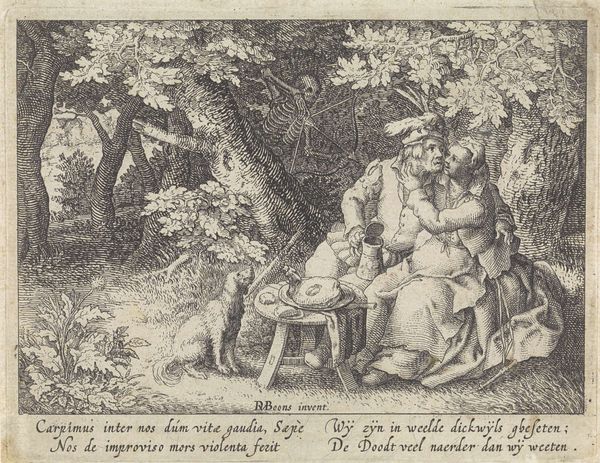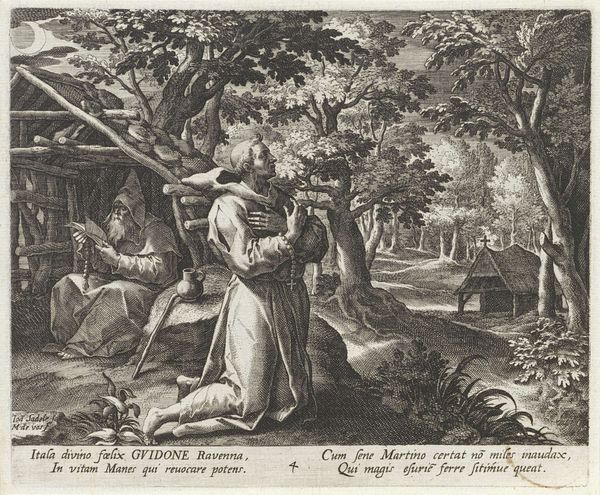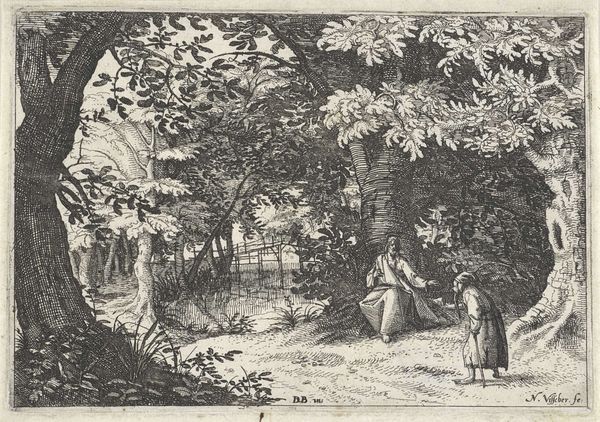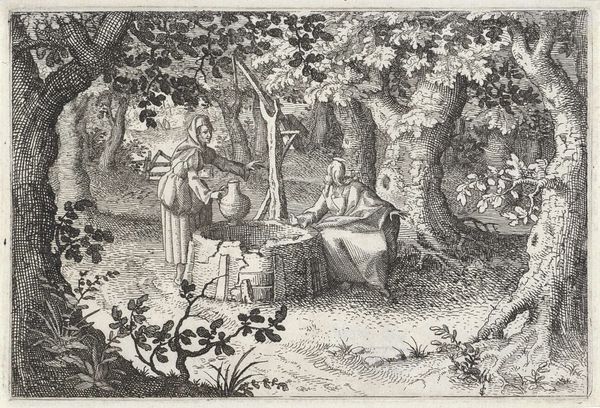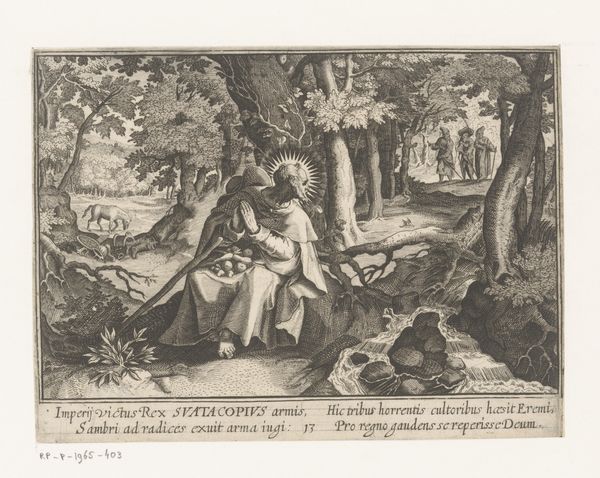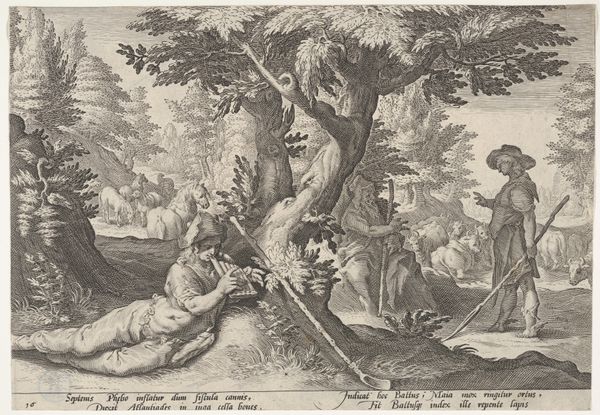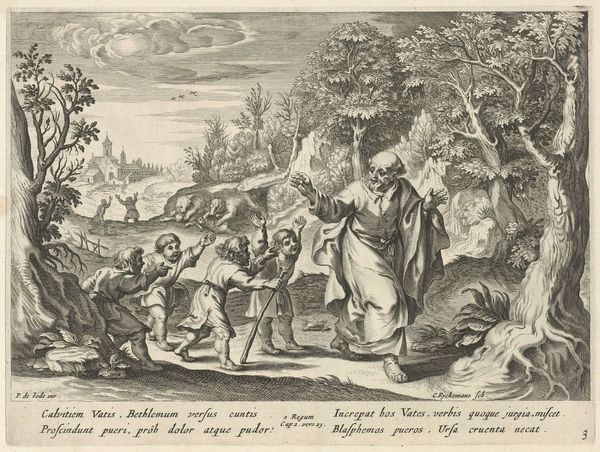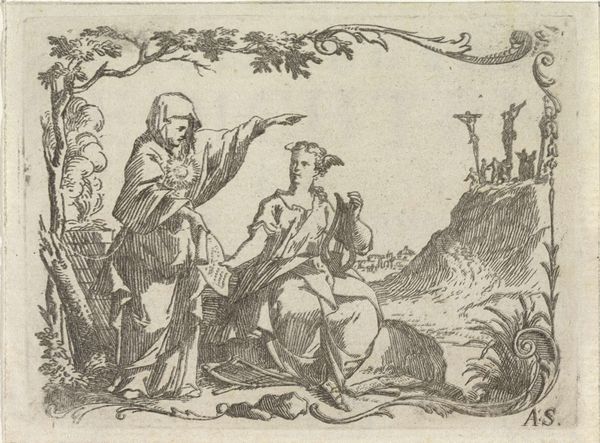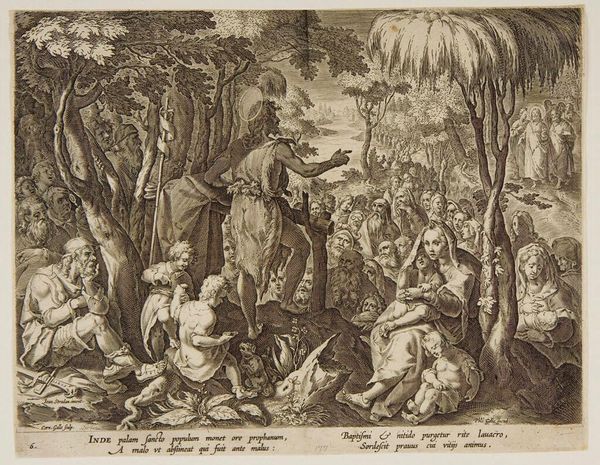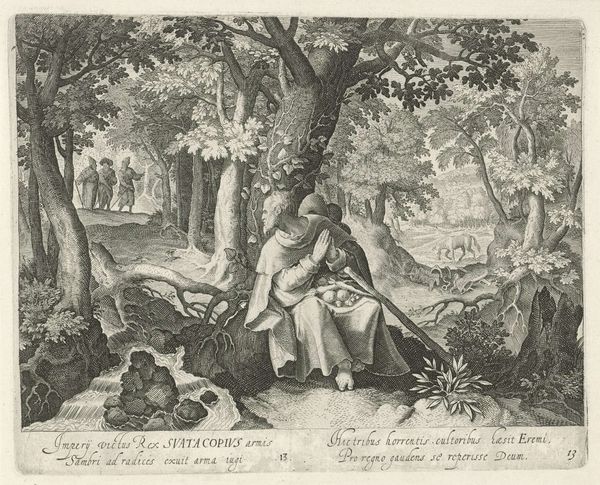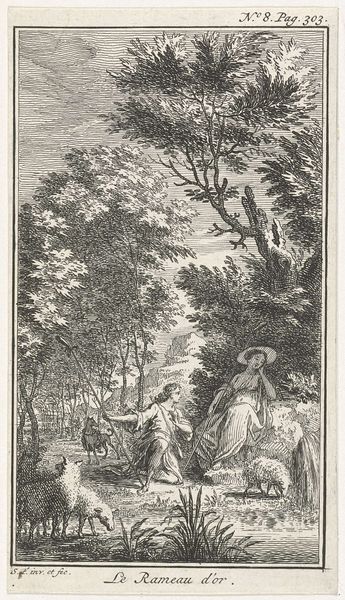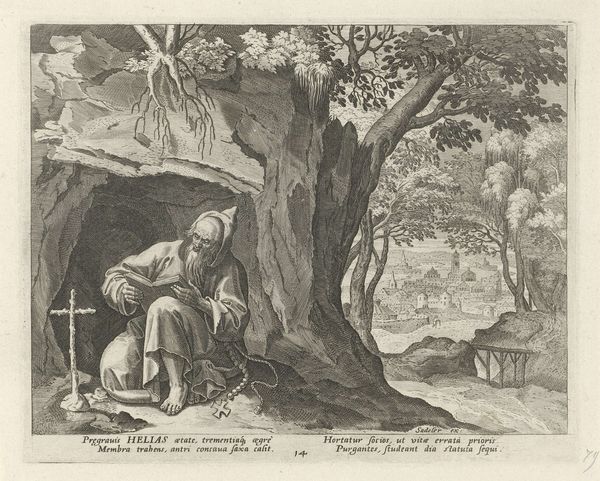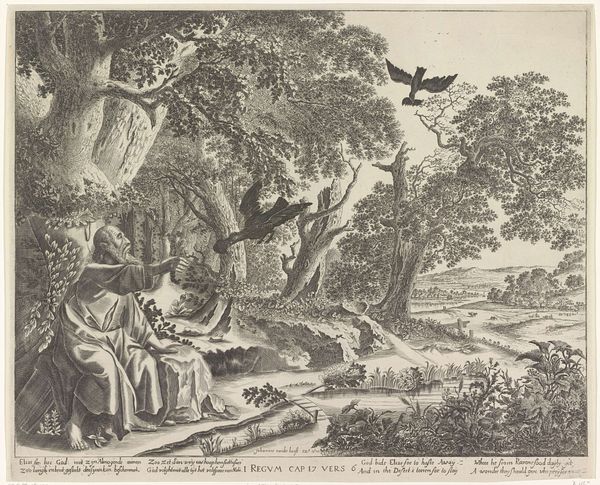
print, intaglio, engraving
intaglio
old engraving style
landscape
pencil drawing
history-painting
engraving
Dimensions: height 170 mm, width 209 mm
Copyright: Rijks Museum: Open Domain
Johann Sadeler the First created this engraving of Saint Zeno of Antioch as a hermit sometime between 1570 and 1600. It shows the Saint in prayer, in a forest, being offered bread by a woman. This image can be interpreted through the lens of the religious and social tensions of the late 16th century, especially in the context of the Counter-Reformation. Sadeler, working in the Catholic centers of Munich and Venice, produced engravings that often reinforced traditional religious values and hagiographies like this one. The detailed naturalism of the forest setting, combined with the idealized figures of the saint and the woman, serves to create a scene that is both relatable and aspirational. The act of offering bread can be seen as a commentary on charity and the importance of good works, core tenets of Catholicism, while the depiction of Zeno as a hermit underscores the value of piety. Studying the cultural history of the late Renaissance, and the Counter-Reformation in particular, helps to further illuminate the social role of images like this one.
Comments
No comments
Be the first to comment and join the conversation on the ultimate creative platform.
